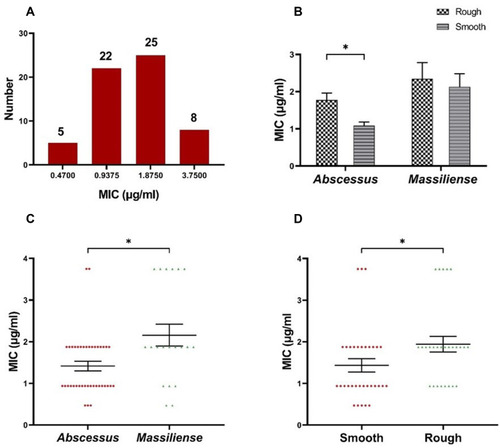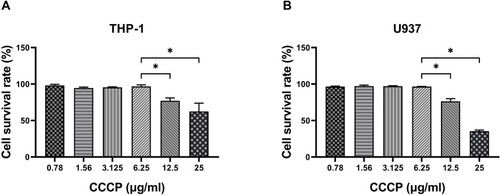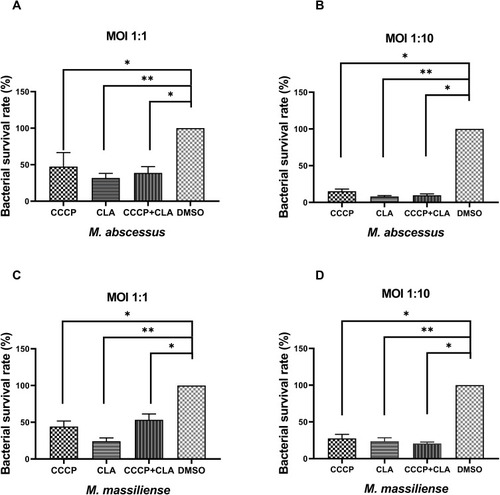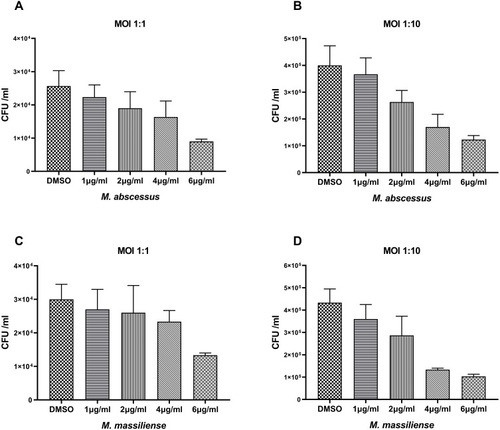Figures & data
Table 1 MICs of CCCP for Reference Strains of 29 RGM Species and 18 SGM Species
Table 2 MIC, MBC Values and Antibacterial Activities of CCCP Against M. abscessus Complex
Figure 1 The MIC of CCCP against 60 clinical M. abscessus isolates. (A) The MIC distribution of the M. abscessus isolates. (B) The MICs of CCCP in rough morphotype and smooth morphotype. (C) The MIC distribution of the isolates of M. abscessus subspecies abscessus and M. abscessus subspecies massiliense. (D) The MIC distribution of the isolates with smooth morphotype or rough morphotype. Error bars represent the standard errors of the data points. *P < 0.05.

Figure 2 Cytotoxicity assay of CCCP in the THP-1 and U937 cells. THP-1 cells (A) and U937 cells (B) were treated with different concentrations of CCCP and LDH activity in the cell culture supernatant were analysed. The experiments were carried out in quintuplicate. All data are shown as the means ± SD (n = 5). Results shown are from one representative experiment, *P < 0·05.

Figure 3 Intracellular bacterial survival rate of M. abscessus (ATCC 19977) (A and B) and M. massiliense (CCUG 48898) (C and D) with CCCP treatment. CCCP group: infected macrophage treated with CCCP (6 µg/mL); CLA group: infected macrophage treated with CLA (2 µg/mL); CCCP+CLA group: infected macrophage treated with CCCP (3 µg/mL) and CLA (1 µg/mL). The CFU were enumerated in triplicates. All data are shown as the means ± SD (n = 3). *P < 0.05; **P < 0.001.

Figure 4 Intracellular bactericidal activities of different CCCP concentrations against M. abscessus and M. massilliense in macrophages. The number of M. abscessus (ATCC 19977) in macrophages treated with different concentrations of CCCP at a MOI of 1 (A) and a MOI of 10 (B); The number of M. massilliense (CCUG 48898) in macrophages treated with different concentrations of CCCP at a MOI of 1 (C) and MOI of 10 (D). All data are shown as the means ± SD (n = 3).

